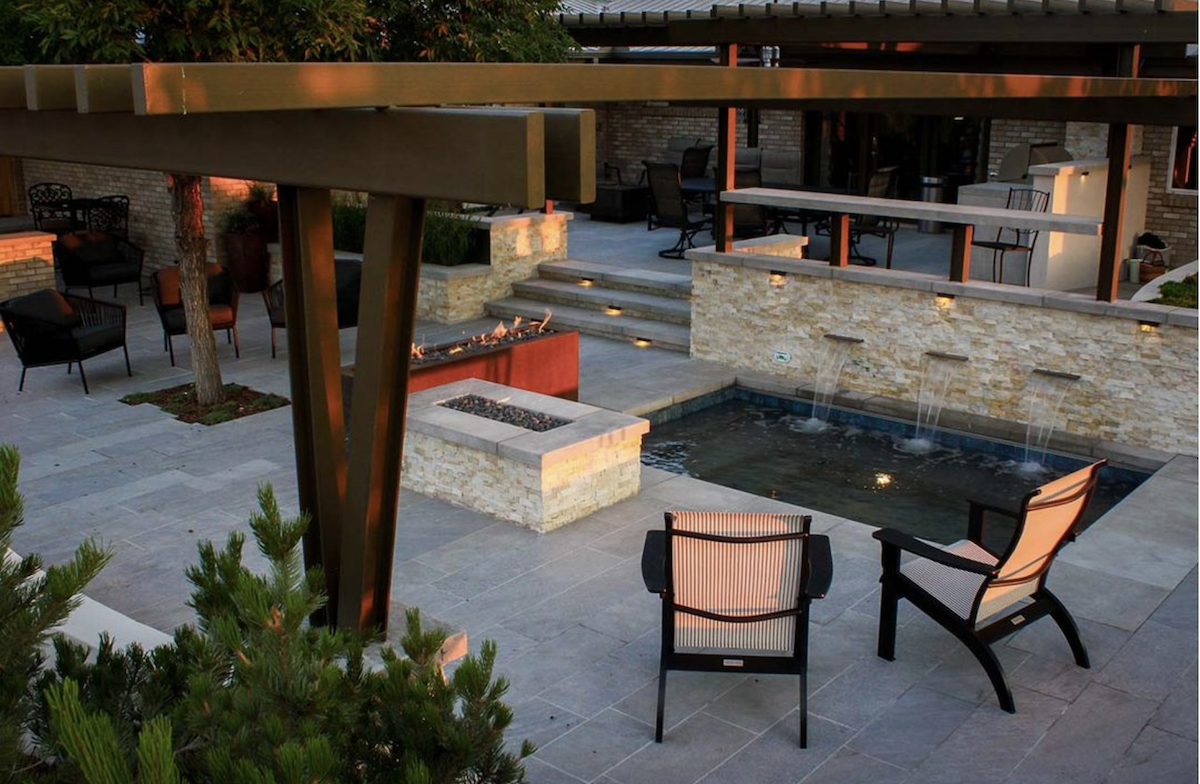Landscape design transcends mere plant selection and placement; it's an art that harmonizes color, form, and function. The strategic use of color can transform a bland space into a vivid canvas that reflects the personality of its environment and its inhabitants.
Color Theory

The Essence of Color Theory
The color wheel is a vital tool in landscape design, categorizing colors into primary, secondary, and tertiary groups to understand their interactions. It's the foundation for creating eye-pleasing, harmonious color schemes. Harmony is key, with complementary colors offering vivid contrasts and analogous colors promoting tranquility.
Emotional Influence and Palette Selection
Colors also wield the power to shape emotions—warm colors inject vibrancy and warmth, making spaces feel cozy, while cool colors instill a sense of calm and spaciousness. Neutral tones serve as a versatile foundation, enhancing the prominence of other colors. The strategic selection and combination of these colors can significantly influence the atmosphere and perception of a landscape, allowing designers to curate spaces that evoke specific emotional responses and achieve a balanced, cohesive look.
Application of Color in Different Landscape Styles
Formal gardens often utilize a limited color palette to maintain a sense of order and elegance. Cottage gardens burst with a variety of colors, mimicking the randomness and beauty of nature. Contemporary landscapes might employ bold contrasts and monochromatic schemes for a modern feel.
Seasonal Color Considerations
Designing for seasonal color ensures the landscape remains vibrant year-round. Spring and summer bloom with bright, lively colors, while autumn introduces warm, earthy tones. Winter landscapes rely on structure, bark, and evergreen foliage for color.
Color in Hardscaping
Hardscape elements, such as paths, patios, and fences, are integral to the landscape's overall color scheme. These elements can add contrast, complement the planting, or serve as a neutral framework for the garden.
Lighting and Color
Outdoor lighting can dramatically affect how colors are perceived. Warm lighting can enhance the colors of plants and materials, creating an inviting ambiance after sunset.
Maintaining Color Year-Round
Incorporating a mix of evergreens, perennials, and annuals can ensure that your garden remains lively throughout the year. Evergreens provide a constant backdrop, while annuals can be rotated to keep the color display fresh.
Wildlife and Color
Colorful gardens attract a variety of wildlife. Brightly colored flowers attract pollinators, while berries and fruiting plants can attract birds.
Water Features and Color
Water features add a dynamic element to gardens, reflecting the sky, plants, and surrounding structures. The movement of water can also play with light, adding a sparkling effect to the landscape.
Common Mistakes to Avoid
A common pitfall is overcrowding and mixing too many colors, which can lead to a disjointed appearance. Another mistake is ignoring the color of existing structures and hardscaping, leading to clashes.
FAQs
How can I ensure my garden has color in every season?
To ensure year-round color in your garden, plan your plantings to include a mix of perennials, annuals, shrubs, and trees that bloom at different times of the year. Incorporate evergreen plants for constant greenery, and select plants with colorful bark, berries, or foliage for interest during the colder months.
What colors attract pollinators the most?
Pollinators like bees, butterflies, and hummingbirds are attracted to bright and vibrant colors. Bees are particularly drawn to blue, purple, violet, white, and yellow flowers. Butterflies prefer red, yellow, orange, pink, and purple hues, while hummingbirds are attracted to red, orange, and bright pink flowers.
Can I use color to make a small garden appear larger?
Yes, colors can influence the perception of space. Cool colors like blue, green, and purple recede visually, making a space feel larger. Planting these colors at the far end of your garden can create a sense of depth. Lighter colors and pastels can also enhance the feeling of openness. Conversely, warm colors and bold, bright plants can be used closer to the viewing points to draw attention and create layers in the garden.
How does lighting affect the perception of color in the garden?
During the day, the angle and intensity of sunlight can make colors appear brighter or more subdued. In the evening, artificial lighting can be used to highlight certain plants or garden features, altering the appearance of their colors. Warm lighting can make colors seem warmer and more inviting, while cooler lighting can make colors appear sharper and more vivid.
What are some tips for choosing a color scheme for my landscape?
Ensure your garden's palette compliments your home's exterior for a unified aesthetic. Utilize the color wheel to mix harmonious or contrasting colors effectively. Incorporate plants that bloom in various seasons to achieve year-round appeal. Consider using bold colors or distinctive plants as focal points to capture interest, and select plants that align with your maintenance capabilities and gardening style.







